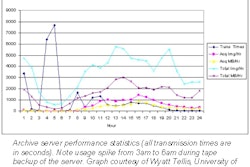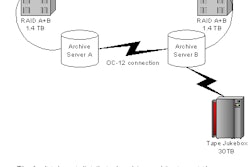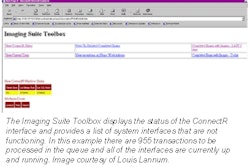LONDON - Although the European Union (EU) has been pushing for increased Internet and intranet utilization among European hospitals, most EU-member countries are still far behind the U.S. when it comes to communication technology, according to a panel discussion at the 2001 United Kingdom Radiological Congress (UKRC) on Wednesday.
Government initiatives to increase the use of communication technology in medicine stem from a desire to control healthcare information as well as deliver it, and to make clinical information available anywhere, said Mike Tatlow, a radiographer and senior lecturer at London’s South Bank University.
However, several factors make it difficult to boost communications technology in the European public and private sectors, including the higher cost of equipment and technology, local-call charges for Internet use, functionally unavailable high-speed Internet access, and government-controlled healthcare systems with limited resources.
At present, many U.K. hospitals are neither connected to the Internet nor have adopted PACS, meaning that doctors still deal primarily with hard-copy films and records, transcribed reports, and face-to-face meetings. As these methods are resource intensive, information resources and exchanges remain institution-centered, Tatlow said.
Physician education is limited by lack of connectivity as well. For example, there are still no online CME courses are available to U.K. physicians, said Dr. Andrew Downie of the Victoria Infirmary in Glasgow, Scotland. Tatlow said the U.K. is still stuck with "chalk and talk" education that is primarily institution-based.
Increased Internet and intranet usage would enable instant data availability, virtual consultation, reduced duplication of information, and access to worldwide resources, Tatlow said. In the education arena, connectivity would bring mixed media, a dynamic learning environment, and remote access for students.
Beyond technical shortcomings, there are social issues that stand in the way of increased electronic communication as well. Tatlow said that European professionals are relatively conservative, and that introducing the Internet would require new work practices that physicians may not be willing to learn if it means a temporary drop in productivity.
Some communication technology pioneers in the U.K. fear "the leapfrog effect," wherein early adopters pay the price of developing new technologies, Tatlow said. As medical resources are slim, there is a general reluctance to purchase the new systems, thereby funding cheaper and better technologies that will eclipse the first-generation in a matter of months.
"If you buy now, systems will be out of date by the time you get them installed," Tatlow said. Physicians used to a hard-copy system are inclined to believe that medical resources might be better spent elsewhere.
Nevertheless, Tatlow believes the Internet has a place in diagnostic imaging in the EU, noting that the benefits of increased connectivity outweigh the negatives. "We must overcome these limitations to increase data accessibility, [and] to provide information transparency," he said.
Some progress has been made in putting U.K. researchers online. For example, hospital librarians across Glasgow have created an e-library consortium. Hospitals that
subscribe to specific journals make their passwords available to all other hospitals in the consortium, Downie said.
AuntMinnie.com contributing writer
May 24, 2001
Related Reading
Spanish radiology meeting gets wired, May 7, 2001
Click here to sign: digital signatures in radiology, January 10, 2001
Eufora e-mail connects European radiologists, March 30, 2000
Click here to post your comments about this story. Please include the headline of the article in your message
Copyright © 2001 AuntMinnie.com



















